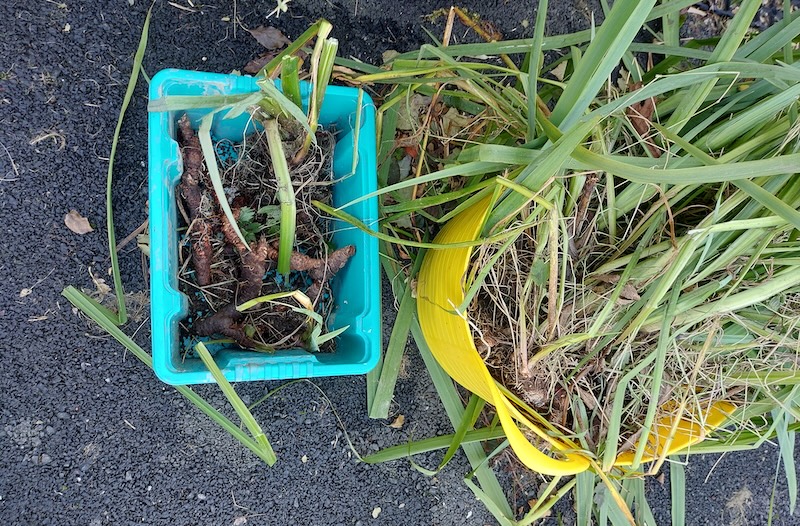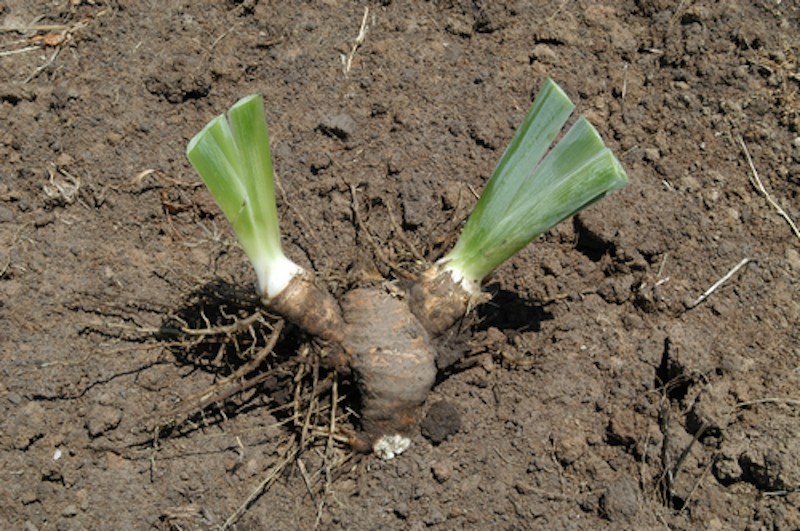Irises are lovely perennials that boast some very showy flowers. Wanting to expand your Iris collection is completely understandable and easy through propagation. Irises are clump-forming plants that often have thick roots known as rhizomes. These plants naturally grow and spread, creating new clumps, which can be divided and transplanted.

Photo by Conall, cropped, Flickr, Copyright CC BY 2.0 DEED
Methods To Propagate Iris
Propagate Irises through seed or division. Growing Irises from seed is a long process. Seeds must be harvested after the flowers fade and then planted in the fall. The young plants will emerge in the spring and often do not bloom in the first year. Most Irises are hybrids, so the seeds contain genetic information from the parents and may show a blend of traits, different from the parent plant. A unique Iris can be a fun surprise, but this isn’t ideal if you want consistency among your existing plants.

Photo by CountryMouse13, cropped, Flickr, Copyright CC BY 2.0 DEED
Division is a much quicker process. New divisions typically bloom in the first season, and the flowers will look like the parent plant. Division also benefits mature Iris clumps. Crowded plants may experience stunted growth because they have to fight nearby plants for resources. Separating the plants and giving them space enables them to thrive. Dividing Irises also allows you to plant in eye-catching drifts, giving you more beautiful flowers to enjoy.
What You Need To Propagate Iris
You need a spade shovel or a hand trowel to propagate Irises. Use a sharp shovel to dig up and separate the clumps. You can use a hand trowel for more delicate work to preserve as much of the rhizomes as possible. Use a sharp knife or pruning shears to separate stubborn rhizomes. Select a planting site that receives full sun, and water the new plants to help them settle in.
Best Time To Propagate Iris
The best time to propagate Irises is after blooming when the foliage begins to decline or fade. Bearded Irises can be divided in mid- to late-summer. Divide most beardless Iris varieties in late summer.
Steps To Propagate Iris
Step 1 - Use a shovel to dig up the entire Iris clump.
Step 2 - Remove loose soil and divide the Iris clump into smaller sections.
Step 3 - Use a knife or pruning shears to separate the rhizomes as needed. Each division should have at least one or two leaf fans.
Step 4 - Discard clumps that are soft or have woody stems.
Step 5 - Cut the foliage using the pruning shears so the leaves measure up to six inches long.
Step 6 - Prepare the planting location by amending the ground with compost. Plant each clump in the prepared area, spacing plants one to two feet apart.

Photo by K-State Research and Extension, cropped, Flickr, Copyright CC BY 2.0 DEED
Caring For Young Iris Division
Plant recently divided Iris plants in a spot that receives 6 to 8 hours of full sun. Irises prefer well-drained soil that is slightly acidic, and poor, compact soils can be amended with compost. The new plants need water when the top layer of the soil is dry. Continue to water until new growth appears, and then scale back to weekly watering. Cut back foliage in the fall after the first frost.
 |
Author Alison Cotsonas - Published 01-08-2024 |
